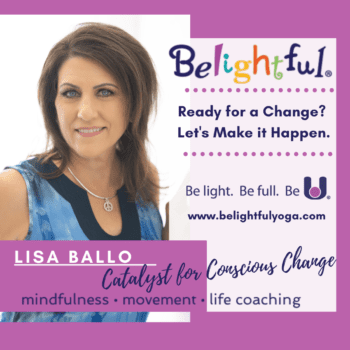Are you thinking about getting started with meditation, but haven’t yet taken the leap? We get it. Starting a meditation practice can be daunting. Especially if you believe you have to twist yourself into a pretzel, don some special headgear, and gaze into your novel for hours. You don’t, by the way.
Plus, once you start introducing some sort of regular meditation practice into your life, you’ll be amazed at how it helps you lower stress, improve focus, reduce brain chatter, understand pain (emotional or otherwise), and generally connect better. With everything.
Ready to begin?
Shutting Off Autopilot
How much of your day are you operating on autopilot? If you said something like, “a whole lot,” join the club. The amount of time we’re running on autopilot is estimated at about 95%. So, yeah. It’s part of the human condition.
The world is a crazy place. Your brain is bombarded with millions of sensory inputs every second. To deal with this, the neural networks of your brain reduce these into manageable shortcuts. It’s remarkably efficient at this. (Good job!) So much so that the default brain signals often cause you to behave based on old well-worn patterns before you even have the chance to recall what you actually meant to do. In other words, you shift into autopilot.
We all do it.
Mindfulness Is Different

The mindful aspect of meditation asks you, instead, to stay focused on the present moment and become fully aware of your body, your environment, and your thoughts in that moment. It’s the complete opposite of the default processes that drive autopilot.
It sounds easy, right? Well, it is. And it isn’t.
You’re attempting to do this without judgment or criticism of your body, environment, or thoughts. Such intentional actions require some work. And practice. The more you activate this intentional way of thinking though, the more natural it becomes. In addition, you’re stimulating neuroplasticity. This transformative way of thinking will enable your brain to develop new neurons and pathways that aren’t groomed to engage in autopilot behavior.
The best part is, meditation isn’t some strict, sit upright in a cave, and get hit with a bamboo stick practice. Unless you want it to be.
The Undisciplined Discipline of Meditation
There are many MANY forms of meditation.
Some meditators prefer to sit in quiet and listen to their breath. Others may, instead, find a “home base” (their hands, a steady sound, a sensation in the body) to which they can keep returning.
Meditators may opt for an instructor guiding them through meditation. They may do these in person, online, or using an app. These meditations might involve breath work, visualization, or myriad other options. They may also be body scans where the practitioner homes in on areas of the body where they notice stress or tension and then move down the length of body while attempting to release those areas.
There is even walking meditation which asks the participant to become hyper-focused on the body’s movements and physical sensations with each step. If the walk is outdoors, they may also choose to practice being mindful of the nature around them.
The possibilities are endless. And as you get deeper into figuring out what’s right for you, you might naturally gravitate toward more structured practices such as kundalini, vipassanā, loving-kindness meditation (metta), zen, and transcendental (TM).
Just remember, there’s no single right way to meditate. But there is a right way for you. And even that may change from day to day.
Getting Started with Meditation
Now that you’re completely swimming in options, where to begin!?

Here’s the thing. Whatever route you choose, meditation isn’t about wiping your brain clean of thoughts. Nice as that may sound, you’re not a computer or a science fiction drone whose memory can be cleared. And if your goal is to do that, then you’ll have an impossible time establishing a practice you can stick with.
Meditation is more about being with your thoughts and feelings in that moment, no matter how disquieting they may be. So when you first set out to begin, find a peaceful space where you won’t be distracted. Comfort is also key. If you’re hot or cold, you’ll be thinking about that the whole time. And there’s no rule that says you must be in a seated position. If sitting up causes you pain, then lean back in a chair or even lie down. Just be sure you can breathe fully.
Then set a realistic time limit for your meditation. It could be a minute or two to start. Truly. Give yourself time to acclimate to the practice and allow it to build organically if need be.
Once you’ve settled in and established your time limit, simply start with your breath. Notice where you feel it most in your body. Then begin to follow it with some curiosity. Is your breath shallow or full? Warm or cool? Each time thoughts vie for your attention (and they will), just return to the breath.
When you’re time is up, you’re done. That’s it for the day.
Ready to Give Meditation a Shot?
When getting started with meditation, one of the most important things to do is not judge yourself! As simple as it sounds, you may have trouble relaxing the first few (or more) times. You’ll also have days where it comes easily and others where it doesn’t. Even advanced practitioners experience this.
So stick with it. It takes time and patience to establish a practice.
And if you’d rather not embark on this journey alone, please contact us! Our on-site and virtual mindfulness, yoga, and coaching services can give you just the support you need to help you establish and grow this life-changing practice.



